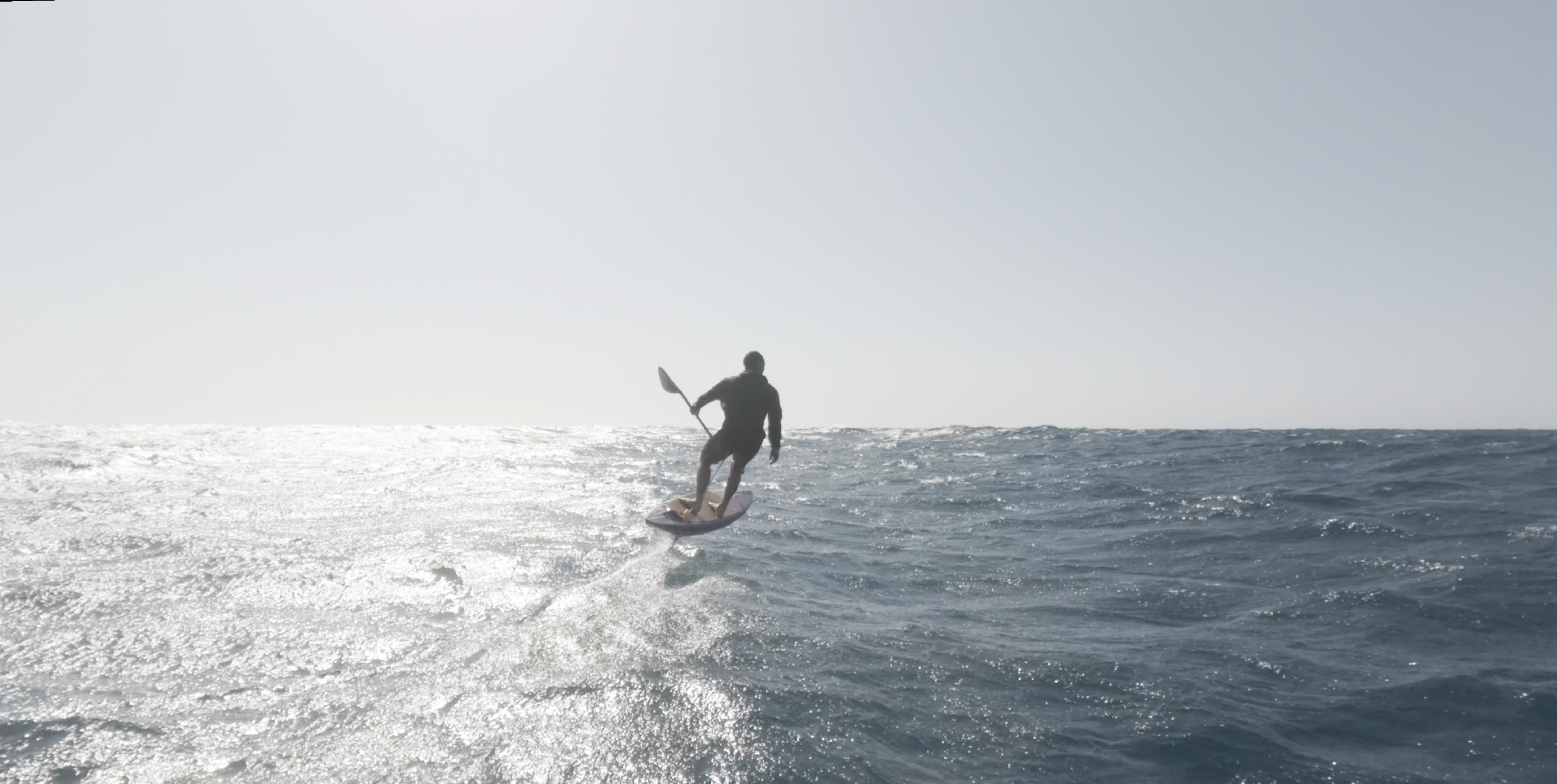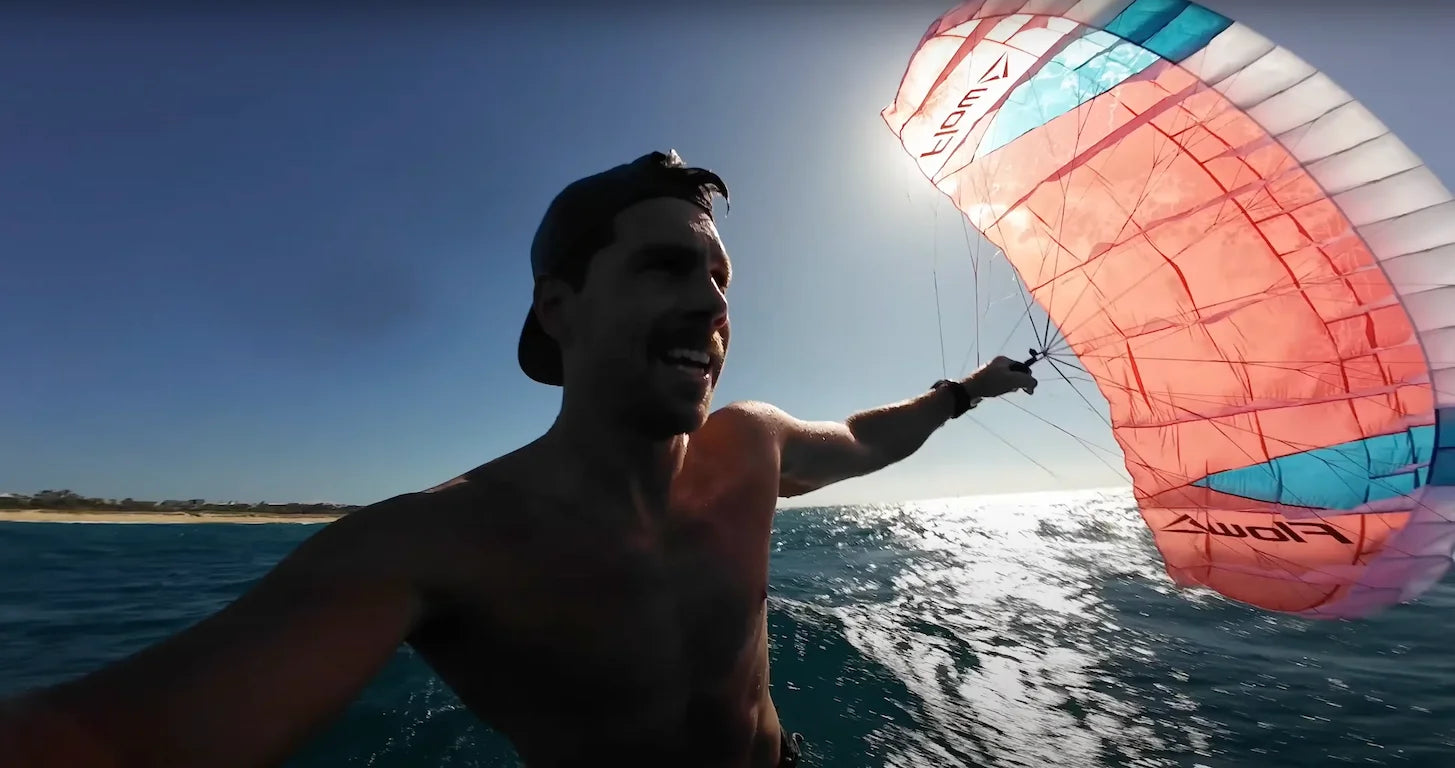
Zane Westwood returns to WA’s desert breaks
Reconnecting with the raw power of Western Australia’s desert coastline
After years of foiling in the clean, sand-bottom waves of Australia’s east coast, Zane Westwood headed west to put his quiver through a proper workout in heavier surf. It had been over a decade since his last trip to this coastline, and this time, the goal was clear - ride serious waves and see how his setups performed in tougher conditions.
With a 4x4 packed to the roof and enough supplies to stay self-sufficient for weeks, the crew made their way deep into the desert coast. Out here, the comforts fade fast - scorching days, relentless wind, and the kind of isolation that strips everything back to the basics. Between sessions they tuned gear, checked equipment, and watched the swell bend across the reefs as the tide shifted. It was the kind of trip that reminded everyone why they chase waves in the first place.

Foiling in Western Australia has changed since Zane’s last visit. A decade ago, foiling was barely part of the landscape, but it’s far more common now, with more riders exploring open-ocean runs and reef setups along the coast. Where Zane was headed though, things are still raw. The desert breaks of Red Bluff and Gnarloo remain remote and demanding - long drives, limited access, and heavy waves that don’t make foiling easy.
Out there, he was likely one of the only foilers to have tackled those spots, and that sense of isolation added to both the challenge and the reward - exactly the kind of test that pushes a rider to their limits. Returning to these waves after so many years felt like revisiting familiar ground with a completely different skill set, shaped by time, experience, and the kind of knowledge that only develops after years spent reading the ocean.
Red Bluff held the kind of energy Zane had been chasing – fast, heavy, and precise. The wave there is powerful - a heavy left-hand reef that demands precision. Long, grinding walls run down the line, breaking over shallow coral ledges before bending toward the desert cliffs - the kind of energy that exposes every detail in a rider’s timing and positioning. The wind funnels straight down the point, switching from perfect offshore to gusty crosswinds within minutes.
Zane rode his Spitfire V2, a prone setup he’s spent the past year refining in varied conditions. “I’d been feeling this board out for about a year in world-class sand-bottom waves,” he said after one of the bigger sessions. “I was keen to see how it went in proper reef power - and it went better than I expected."

That session captured the balance between control and unpredictability that Zane was after, reading the ocean in real time and adjusting with every change in wind and movement across the reef. His setup felt more “streamlined” and “cut through the air nicely,” something he’s learning to use to his advantage with every session.
When the crew moved north to Gnarloo, the environment shifted completely. There, the coastline opens up - long wind lines, deep blue water, and an endless horizon of bumps. The energy changes from tight reef power to rolling open-ocean motion. Foiling here means reading texture and timing, chasing rhythm across miles of moving water. The swell wrapped into long, open faces, and the wind filled in harder through the afternoons - perfect for downwinders and linking big ocean bumps.

The long runs demanded rhythm and awareness, and he found both, linking sections with ease as the wind filled in. “Every time I enter the water, I walk away with new lessons that resonate in my day-to-day life,” he said, a reminder of what these remote sessions are really about.
The West Coast’s reef and wind setups are unforgiving: shallow ledges, steep faces, and surface conditions that shift from glass to chop in seconds. It forces riders to read everything - wave shape, wind shift, foil lift - and to pick gear instinctively. That constant adaptation is what makes trips like this so valuable; every session becomes another step in understanding what works.
Zane’s been testing and feeding back to the Amos Shapes team for years now, and that relationship shows in how naturally he rides across different conditions. His track record - whether it’s the 75 km downwind session on the east coast or his recent features in foiling media (tonicmag.com) - adds context to the kind of experience he brings to testing.

What stands out about Zane is his approach - no overthinking, no forced plan. Each day started with a read of the wind and swell, then a decision built purely on conditions. It’s a mindset shaped by years of time in the water, trusting feel over theory. That flexibility, that willingness to respond rather than control, is what defines his riding and makes his feedback so valuable.
Days on the west coast blurred into a steady rhythm of wind, reef, and open water. The isolation, the power of the ocean, and the pace of being out there every day brought a focus that’s hard to find anywhere else. Zane's return to WA was about reconnecting with the kind of waves and conditions that shape better boards and more capable riders, and the calm that comes from being fully immersed in nature.


